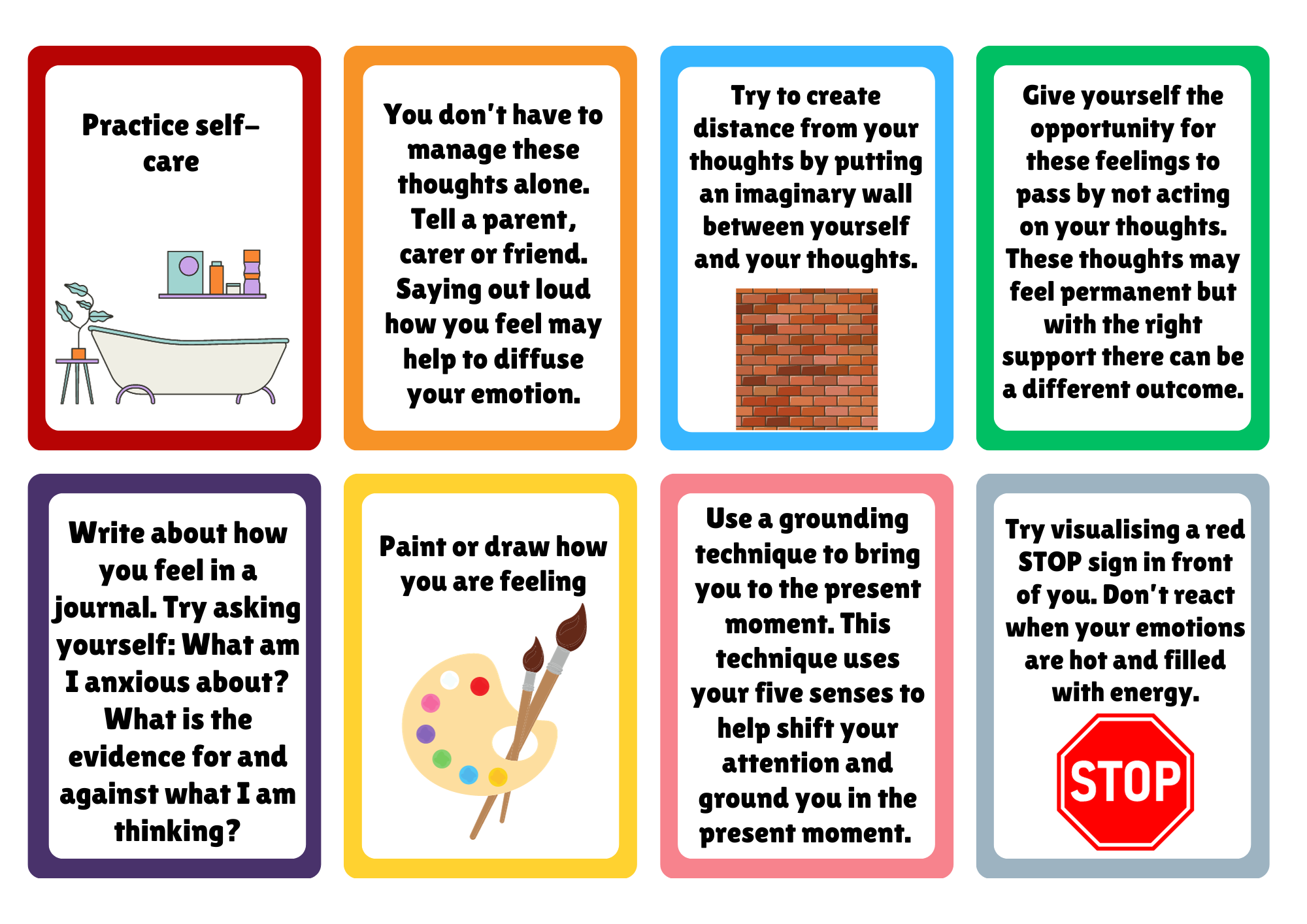Managing distressing thoughts
There are times in life when we might feel totally hopeless, helpless and overwhelmed with emotional pain. It can seem like there is no other way out of our problems and that we may have run out of possible solutions.
Sometimes this can lead to suicidal thoughts. Suicidal thoughts can be common, but can be frightening and confusing. These thoughts can be a sign that some things need to change in your life – not that you need to end your life.
If you are worried about yourself, a friend, or your child or young person, please call our 24/7 mental health crisis line free on 0800 915 4644. It’s open all day and all night, seven days a week.
Here are some thoughts and suggestions of things that have helped other young people who experienced distressing thoughts. See what works for you.

Help us improve our website
Please take a moment to share your thoughts and help us enhance our website by completing our short survey here.